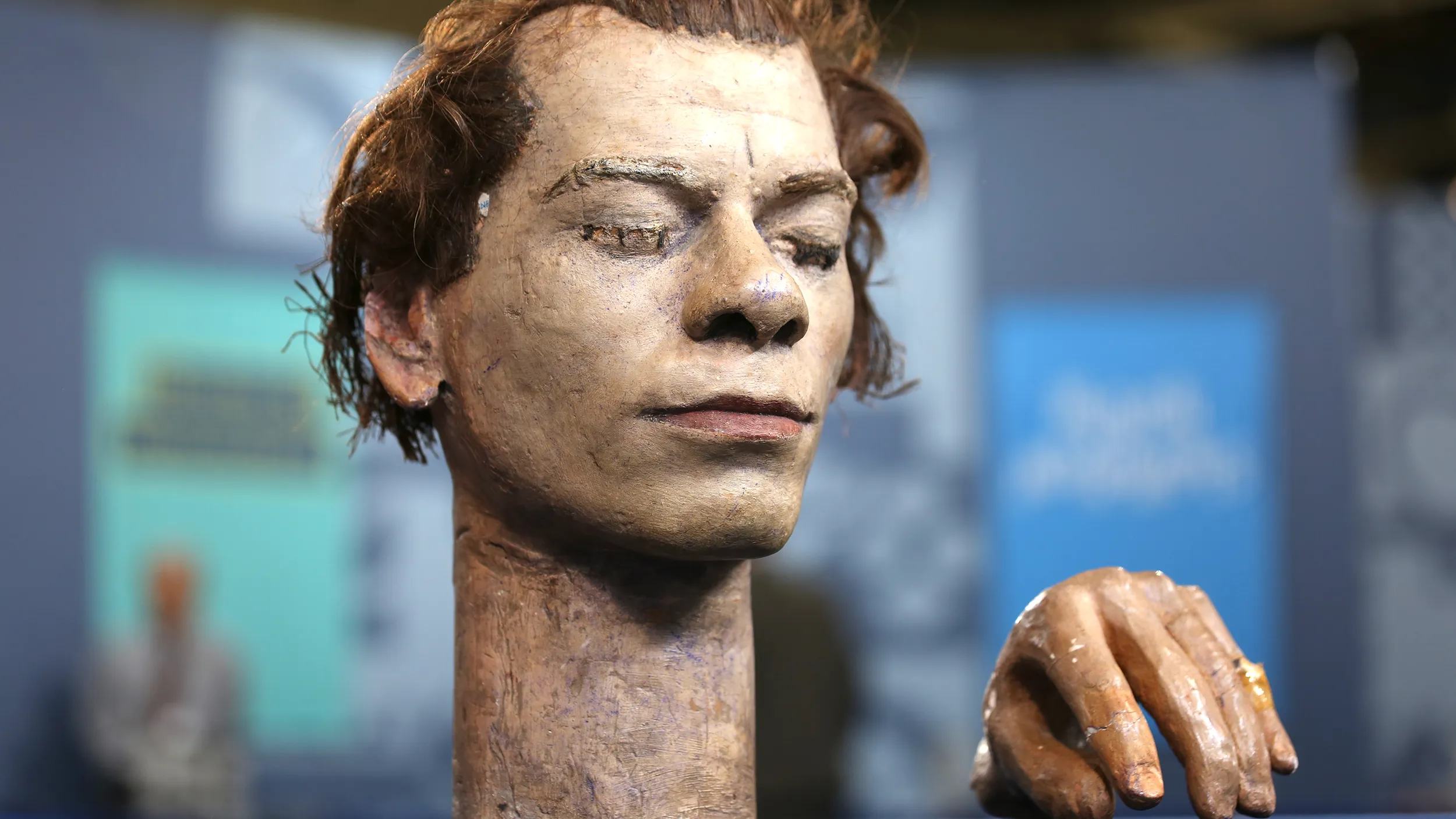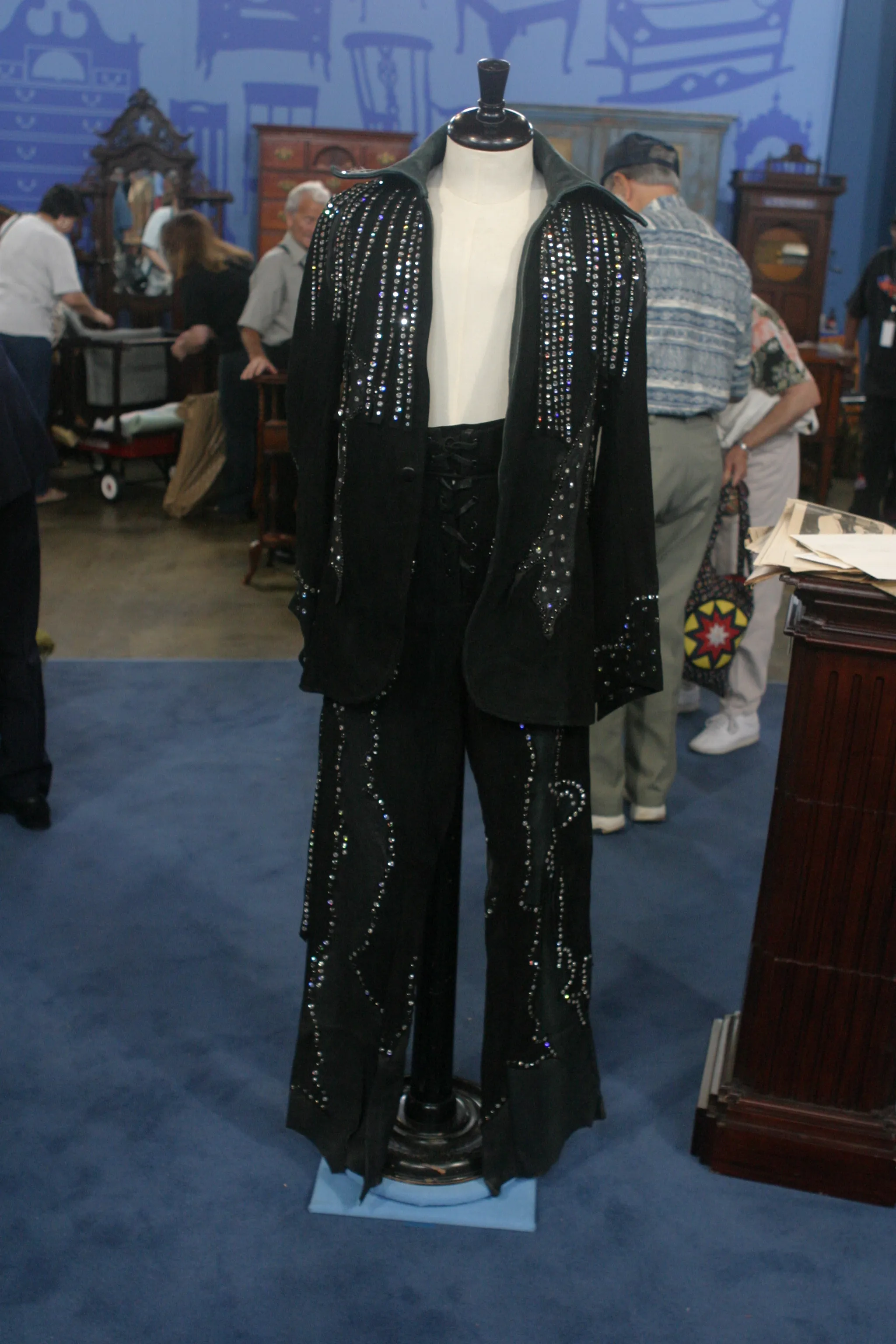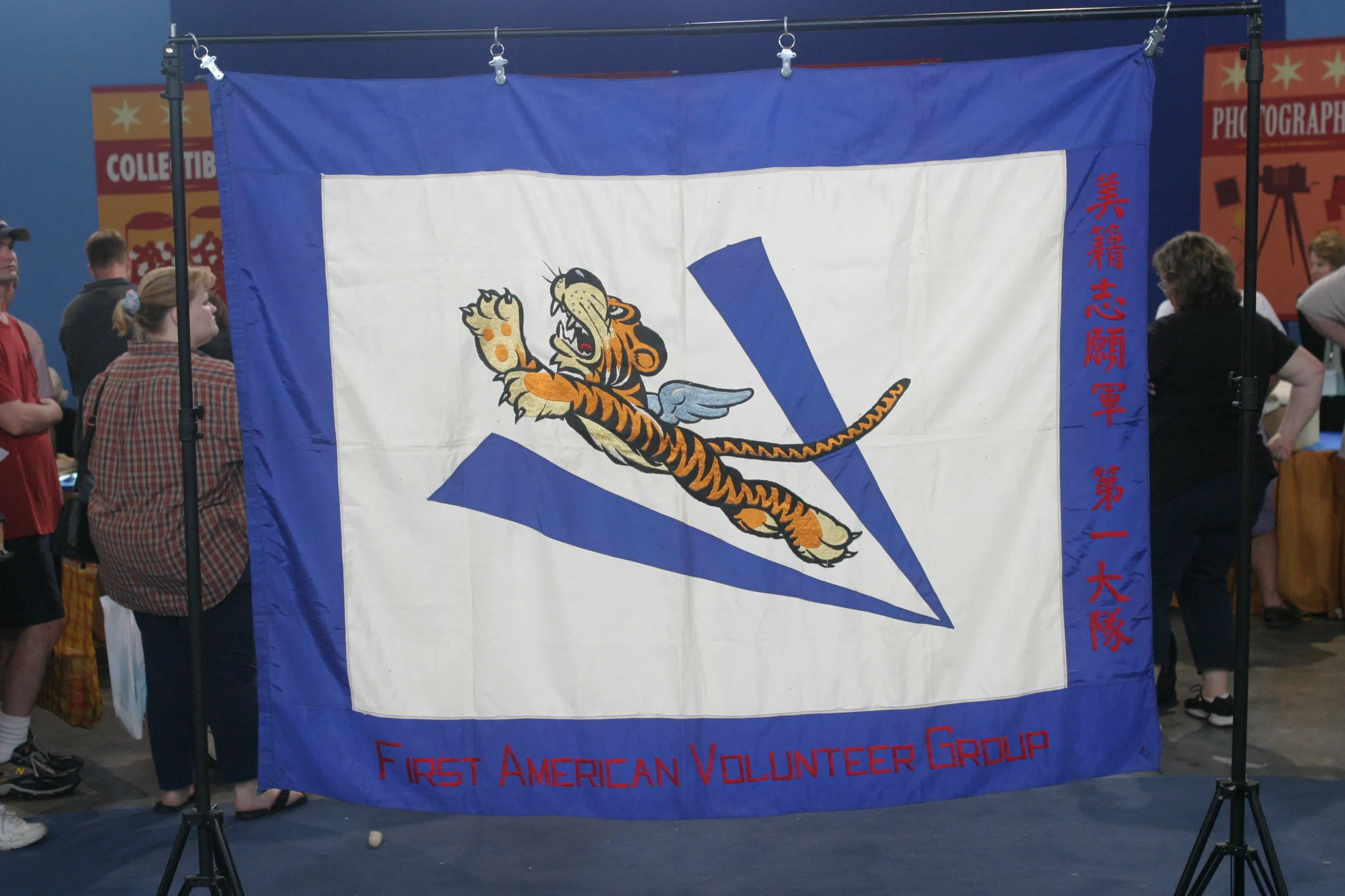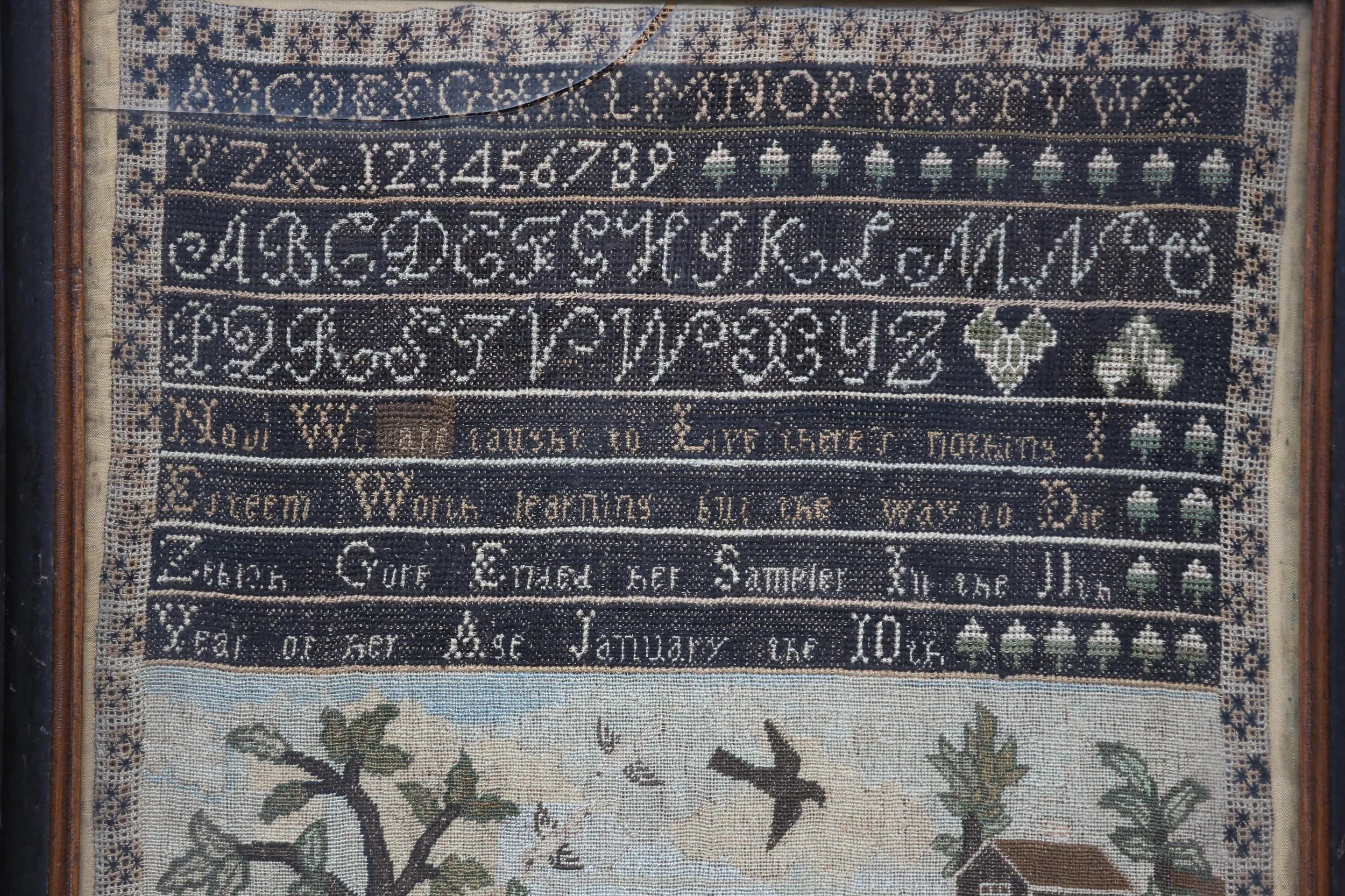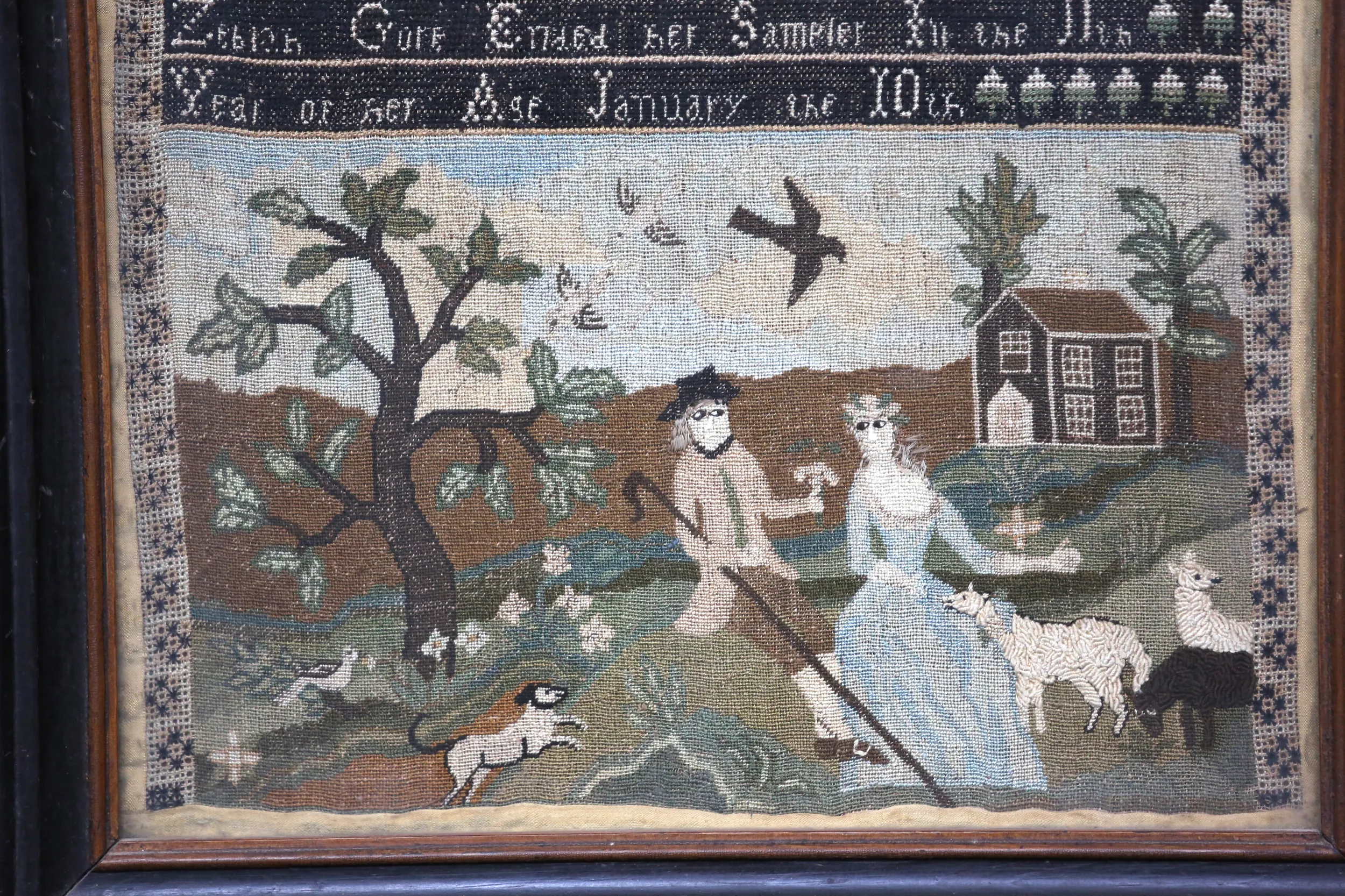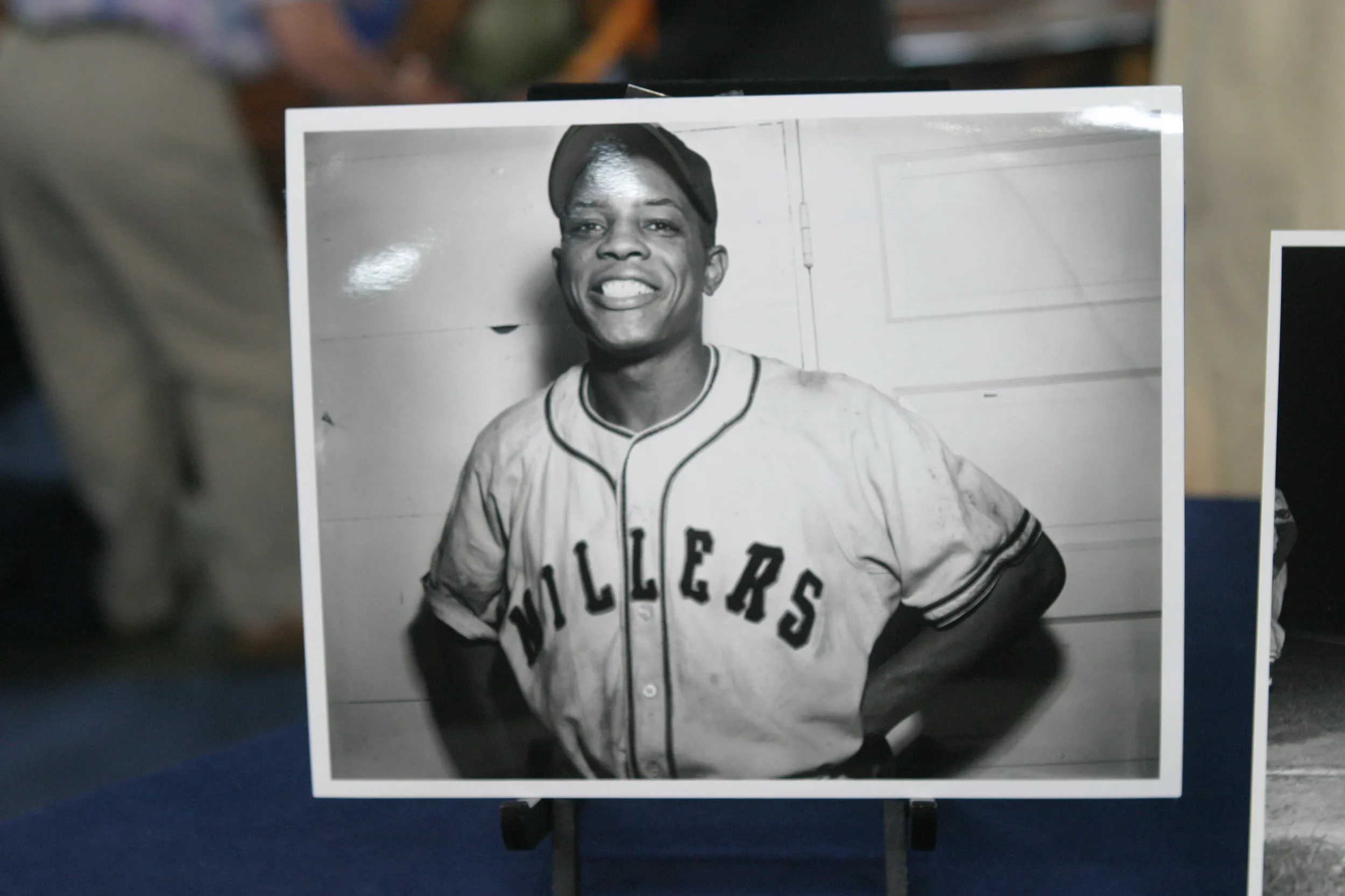GUEST: It was done by somebody named Zebiah Gore when she was 11 years old. And she was the grandmother of a woman named Mary Leeds, and my grandmother worked for Mary Leeds. And my grandmother acquired the sampler.
APPRAISER: So Mary Leeds gave her the sampler?
GUEST: My grandmother helped the woman. She wasn't a paid employee. She helped the woman. And I think in... just saying thanks, she gave it to her.
APPRAISER: And when was this all taking place?
GUEST: My grandmother was a widow, and a young widow, and so I would guess it was in the 1920s or '30s.
APPRAISER: And how long have you had this textile?
GUEST: My grandmother died in 1973. So it was around that time.
APPRAISER: You've done a little bit of homework about this, I know. But you might not know some of the things that I've been able to find out for you.
GUEST: Oh, now that's what I want to know. (laughing)
APPRAISER: As you know, this was made by an 11-year-old named Zebiah Gore. She was born in 1780. So this was done in 1791. What is her little motto that she's put here? I think that's interesting.
GUEST: "Now we are taught to live, there's nothing esteemed worth learning but the way to die."
APPRAISER: Boy, that's a little morbid, right? But when you think about it, the childhood mortality was very high in the 18th century, and so this was always on any family's mind. This is one of a small group of samplers that are known to have been made in the Boston, Massachusetts, area, where the Gores were living, as you know. Very British sort of scene here. The shepherd and the shepherdess with the sheep is very typical of this sort of Boston-area school, as is the black background here. And you showed me some literature that there is a nearly identical sampler to this in the collections of Winterthur.
GUEST: Right.
APPRAISER: And who did that sampler?
GUEST: Elizabeth Richards.
APPRAISER: And who was she?
GUEST: We think the two girls were cousins.
APPRAISER: They… Not only do you think, they were cousins.
GUEST: Oh, okay.
APPRAISER: So, Winterthur has the basic match to this sampler-- different motto, but basically the same scene, which implies that they were all going to the same school.
GUEST: Right.
APPRAISER: Did you know that Zebiah Gore had a sister named Hannah Gore, who also has a great sampler?
GUEST: Oh...
APPRAISER: A little bit different, but still this sort of picture sampler, canvas work sampler they're often called. This is a remarkable sampler. The preservation of this is unbelievable. The colors are so bright, and so wonderful. It's as if this was kept in a closet and no one ever looked at it. It's in the original frame, it's in the original condition, it's got a little crack here...
GUEST: That's always been there.
APPRAISER: And I'm not sure that I would do anything with it. You told me you'd been offered how much for it?
GUEST: $5,000.
APPRAISER: $5,000.
GUEST: Several years ago.
APPRAISER: Several years ago. I would tell you that conservatively at auction today, this sampler would sell for between $40,000 and $60,000.
GUEST: No!
APPRAISER: Yes!
GUEST: Okay.
APPRAISER: You going to take it out of the closet now?
GUEST: Well, I don't want people to know I have it. (laughing)

